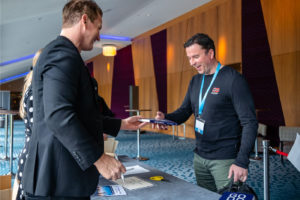How Jim Broke Two Rules but Still Walked Away with a Great Deal
I love sharing knowledge, what I’ve learned personally, and what delegates of the Harbour Club have learned about buying and selling businesses. It’s great knowing that others can learn from our experiences and grow together.
To this point, I’ve shared several important tips and techniques about M&As and acquisition strategies, including how I did my first deal and how my second deal literally walked in my office, how to move up the entrepreneurial ladder by adding acquisitions as a growth strategy, and why not to buy a business that’s “for sale.” In a recent blog, we discussed the importance of looking for business owners who are motivated by an issue or problem and to also be aware that how you structure a deal is more important than price. That’s when I began to share about a deal that a Harbour Club delegate, Jim, recently did.
As a “Clubber,” he learned many new techniques and soaked up the tips from other previous members about acquiring businesses. Today, I’m going to continue his story by sharing with you one of his recent deals.
After learning about the “win friends and influence” tactic at the Harbour Club, Jim went off looking for another deal. Now, I have to say, he ignored two of the Harbour Club’s general guidelines—don’t look for companies that are for sale and avoid retirement sales (because they can be tricky and fixated on getting all cash up front). In his searching for a business to acquire, he found a 72-year-old man who wanted to retire and was trying to sell his business.
The man had the business up for sale for two years. It was a good little business. It was making £300,000 a year in profit, had £400,000 in the bank, and owned its own property. This was a small industrial site where the company was the main tenant. A third of the site was rented out to another tenant who paid a healthy rent. The site, in the north of England, was valued at around £1 million. The man wanted £1.2 million for the business, which is not at all greedy. It was like getting the business for free with the property and the cash in the bank. You’re pretty much being paid to take it away.
Agree then Structure
He’d been advertising it through the usual channels, online and everywhere else, and everybody who approached him had taken the £1.2 million figure and tried to negotiate. He believed he was asking for a realistic figure, not being greedy; he just wanted to retire with a bit of cash. But everyone was trying to low-ball him and offer him less money. The Harbour Clubber just went in there and said, “Okay, we’ll pay you £1.2 million; how do we get you to your £1.2 million.” And then he structured a deal that was basically self-financing.
Jim gave the retiree the cash in the bank, leaving enough behind for some working capital. Jim also gave him a deferred payment, paying him some money over a 12- to 18-month period that would effectively be paid for from the profits of the company. He also released some cash from selling the property. In this particular scenario, he sold the property to his own pension, creating a self-invested pension plan and releasing £400,000 of cash from the sale. Jim then had £1 million of property sitting in his pension with only a £400,000 mortgage against it, which is how it was financed. Of course, it was a self-invested pension plan mortgage, so it was the pension company’s responsibility, not his personal responsibility: he could have sold the property and leased it back with an investor as an alternative.

Jim gave the retiree this simple structure: a bit of your own cash now, a bit of cash over time, and a bit of cash released from the property. That gets you to your £1.2 million, and then you get to walk away with exactly what you want.
The retiree had been trying to sell the business for two years. Now here was an opportunity to get the money he wanted. The only headwind he had was his daughter and his accountant, who were advising him not to do the deal because Jim wasn’t putting any of his own money in.
How did Jim overcome the objection? That came down to a rapport-building exercise. Jim spent lots of time with the man, making sure he got to know Jim properly and see that he was genuine and wanted to do the deal. Jim showed him he could be trusted. He also reminded him that he wouldn’t want to spend another two years not selling the business! Did the retiree really want to sit there for another two years trying to find somebody who would pay them the full amount in cash up front? The net result was the deal got done, and it was the right deal to get done.
Jim was fortunate; he “broke” two of the Harbour Club business deal guidelines, but still managed to walk away with a well-structured deal that solved the business owner’s problem, and he did it all with no money down. Way to go, Jim!
Next time, we continue our journey to doing deals by exploring the importance of the face-to-face meeting, especially when you’re just starting to buy and sell businesses.
Until then, do you have any questions about this deal that I could answer for you?
Let’s Connect!
HarbourClubUSA.com
Unity-Group.com



